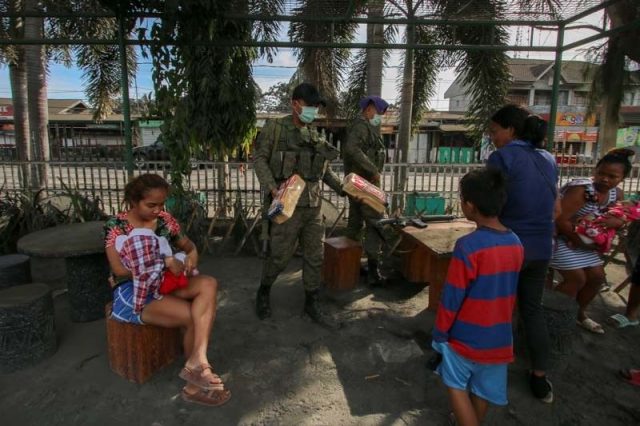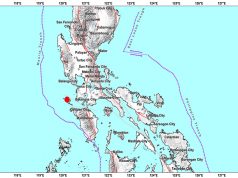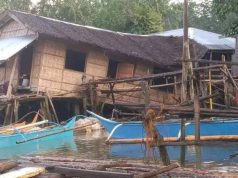Two politicians sought to continue daily operations in Cavite despite advisories from state seismologists on the Taal Volcano eruption.
Vice Mayor Charlie Natanauan of Talisay, Batangas questioned the advisories of Philippine Institute of Volcanology and Seismology (Phivolcs) despite the information being backed by science.
Cavite Rep. Abraham Tolentino, meanwhile, insisted on defying the order from the Department of Interior and Local Government to cease operations in the province due to the imminent hazardous volcanic eruption.
Previously, Phivolcs also faced scrutiny from another representative of Cavite, Elpidio Barzaga Jr., and columnist Ramon Tulfo, who accused the agency of failing to predict the eruption and informing the public about it.
Filipinos, on the other hand, defended the agency, citing the regular social media updates of Phivolcs’ accounts. They also pointed out that the specific time the volcanic eruptions will happen can’t be predicted in the first place.
What government officials want
Natanauan requested President Rodrigo Duterte to change what he viewed as the “opinion” of Phivolcs Chief Seismologist Renato Solidum on the ongoing eruption and allow the constituents to return to their homes.
Talisay is among the areas inside the high-risk 14-kilometer zone.
“Ang plano ko as vice mayor ay ako ay humihingi ng kuwan kay Presidente Duterte na kung maaari ‘yung opinyon ng Phivolcs ay medyo baguhin kasi masyado niyang pinalala ang sitwasyon ng balita,” Natanauan said to radio DZMM on January 20.
“Masyado niyang ano e, sabi niya mas malakas ang puputok na susunod, nag iipon lamang. Opinyon niya ‘yon…Nag-iisa siya sa kaniyang opinyon. Kami buong Batangas ang naapektuhan sa kaniyang sinasabi. Pag-aralan niyang mabuti,” he added.
The vice mayor also expected that the lava will stop flowing once it hits the water.
“Pagkabagsak (ng lava) sa tubig, tumitigil siya dahil nababasa,” Natanauan said.
Phivolcs has previously warned the public that lava, pyroclastic flow and other volcanic debris surpass waters and reach lakeshore communities at a high-speed rate.
Citing the Local Government Code, Tolentino insisted on treating DILG’s memorandum order to close business firms in Tagaytay as a mere recommendation.
“Yun naman po ay naayon sa batas. Under LGU, ang may power of jurisdiction is still the city mayor,” the lawmaker said.
Returning to work is voluntary, Tolentino said. The local government will also pay evacuees who are fit to work to conduct clean-up drives.
He also wrongfully claimed that Phivolcs cleared Tagaytay as part of the 14-kilometer danger zone when the agency only considered the Tagaytay Ridge, an elevated area of the province where hundreds of commercial establishments are located.
Phivolcs also emphasized that the province is still vulnerable to harmful ash fall due to the wind.
Local authorities planned to hold a grand event on reopening Tagaytay again to the tourists on January 24, in line with the Chinese New Year.
Local social media criticized these decisions anew, saying that these officials placed profit over safety of their constituents.
Talisay VMayor blasts PhiVolcs by saying “Siya ba ay Diyos” and orders evacuees to RETURN HOME, then, Cavite Rep. Tolentino says Tagaytay City WILL NOT ACCEPT DILG’s memo maintaining the closure of business establishments affected by Taal Volcano eruption.
What’s wrong with you?
— Ryan (@rryyyaaaannnn) January 20, 2020
When some politicians esp. the Vice Mayor of Talisay, Batangas is more concern with their business and money but not the safety of everyone. The audicity and ignorance of these people. PHIVOLCS are doing their job to keep us updated and what are the possibilities to happen.
— u • (@au_glgd) January 20, 2020
What experts warned
Following the new wave of criticisms, state volcanologists assured Natanauan that their updates are backed by science.
Ma. Antonia Bornas, Phivolcs’ volcano monitoring and eruption division chief, said that they sympathize with what Natanauan is going through which is why they’re doing their best to inform the public with science-based facts.
“We know, we understand their plight so we are working doubly hard so we can give them the best information. We will be the first one to say if it’s safe to go back, we have them in mind all the time,” Bornas said.
In a recent update, they observed that the volcano itself is swelling and that the entire volcanic landscape had changed.
“The island has slightly tilted while being pushed. Some portions of the northeastern side are sinking. Maybe the houses there are already underwater,” Solidum said.
Solidum also said Taal appeared to be “recharging.”
“There is resupply of magma from below based on earthquakes and ground deformation,” he said.










